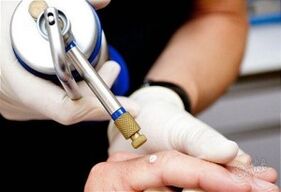To fight tumors on the skin, papilloma ointment is often used.The effectiveness of the product depends on its composition, nature of action and degree of infection.When papillomavirus enters the body, papillomas develop on the body and mucous membranes.
Therefore, the use of ointments, creams and gels usually only have a local effect.The virus does not disappear from the blood.Using ointments along with antiviral medications to strengthen your immune defenses will help avoid recurrence.
How to remove papillomas
Papillomas are benign skin growths.In rare cases, papillomas can develop into malignant tumors.If the papilloma causes no discomfort (physical or emotional), it does not need to be removed.

But if the tumor causes pain, such as when it rubs against clothing, treatment is necessary.It is best to consult with an experienced doctor to learn about papilloma treatment possibilities and options.Experts usually recommend using one of the following methods to remove papillomas:
- Surgery (resection under local anesthesia).
- Liquid nitrogen (freeze destruction).
- acid.
- laser.
- Electric current (electrocoagulation).
Many people use folk remedies to combat papillomas.You should consult your doctor before using traditional methods.Some products cannot be used, such as on the face, and others may have personal side effects.
Using ointments to remove papillomas is a gentler way to fight the tumors than immediate surgery or laser removal.
Types of ointments
All ointments used to fight papilloma can be divided into two types:
Ready-made ointments are sold in pharmacies or specialty stores and come in 3 types:
- Ointment based on active acids.Antiseptics are known to have anti-inflammatory properties.The use of such ointments is not recommended for the treatment of facial papillomas.Additionally, these medications may cause individual side effects and are not recommended for children and patients with kidney failure.Results will appear after a few weeks of use.These ointments are not effective for all conditions.
- Herbal ointment.The active ingredients of the ointment penetrate deep into the roots of the papilloma, while the powder adversely affects the papilloma itself.Since this product is composed of herbs, people prone to allergies may experience an allergic reaction.Herbal medicines, like acids, do not act on the cause of the disease but help to eliminate its external manifestations.
- Antiviral ointment.As is clear from the name, this ointment acts on the cause of papillomas - viruses.These drugs disrupt the development and reproduction process of the virus.
Ointments can also be prepared independently at home.The most famous and effective is vinegar ointment.Put the washed eggs into a cup and pour in vinegar (flavor).Close tightly.When the shells are dissolved, remove the film under the shells, add the fat inside and mix well.The ointment has a shelf life of several years when stored in the refrigerator.
Garlic petroleum jelly ointment, celandine and petroleum jelly ointment, vinegar and flour can also be prepared at home.Homemade ointments can damage healthy skin and should be used with great caution.
Skin treatment after papilloma removal
The use of any skin care products, including ointments, after papilloma removal must be discussed with your doctor.The skin at the excision site is thin and tender, and infection can easily enter the wound.
The doctor will recommend wound treatments and tell you about the possibility of using cosmetics.It is not recommended to use any product until the wound has healed.
After papillomas are removed, you'll need to carefully monitor your skin, follow your doctor's recommendations, and boost your immune system to prevent new papillomas from appearing.























